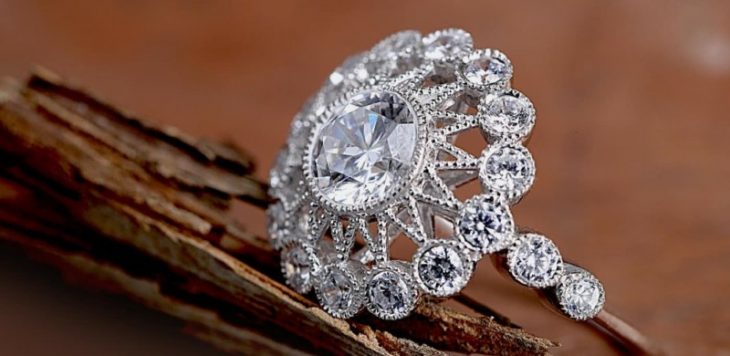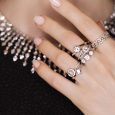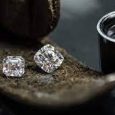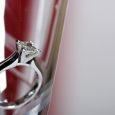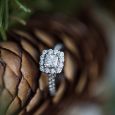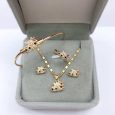
History of Laser Drilling in Diamonds
Diamonds are such a big industry today; and consumers are more particular than ever before about what they want their diamond to look like and how it should perform for them. Yes, that’s true. The increased savviness on the consumer side is wholly due to the fact that individuals are in control of learning all they can about any topic including diamonds. With money being the driving factor in which diamond to buy—especially with budget minded individuals today, it’s the wise road to take—learning before you buy.
It’s not just a matter of selecting a diamond by price or by looks. Now, diamond technology has introduced so many new ways to treat diamonds that our options are nearly limitless. The treatments no matter what they are, have all been instituted to enhance their beauty in some way and make them more salable to the consumer. We like that. We want the best-looking diamond, and the biggest size, plus the most sparkle—and all for the best price. Right?
Laser drilling in diamonds is one tremendous advancement in the diamond field that has brought more beautiful diamonds to the fore, while still keeping them in an affordable price range. There is also the process of boiling diamonds to remove dark inclusions making them sparkle all the more. Let’s look at both laser drilling and boiling diamonds to see where they fit into modern diamond sales. Learning about these processes will also help you make an informed decision about what diamond to buy—and if laser drilled diamonds or those which have been boiled are the right diamond choice for you now. They both are fascinating and offer difference attractive features that you’ll certainly want to know prior to going into a store and buying your diamond engagement ring or other important diamond jewelry item.
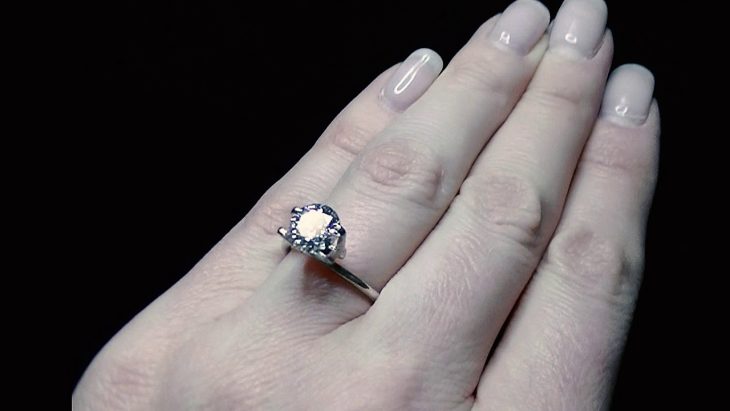
First of all, let’s look at laser drilling in diamonds. Today, laser drilling has become one of the most recognized and effective manufacturing procedures used now. We see laser technology appearing in a number of different industries; like the automotive, aerospace, or medical, the semi-conductor sector, and of course the electrical industries. So, you see, laser drilling is a technology often used on many distinct materials, and that includes the diamond trade.
In fact, laser technology has become so widely recognized and covered in our manufacturing today, it’s easy to not think about when or where laser drilling got its first start! In order to provide a little context to the topic of laser drilling, especially as it relates to the diamond sector, we’ve explored its rich history in greater detail in this discussion.
Linking Laser Cutting and Laser Drilling in Diamonds
Many of the laser processes performed in laboratories today including those that other laser companies are offering are strikingly similar. It can occasionally then, be problematic in telling each one of them apart from one another. For example, laser drilling on the whole is also a form of laser ablation, because it involves the melting of any material’s surface— layer by layer. Therefore, laser drilling could potentially sometimes be mistaken for laser cutting. The two processes are both a form of cutting, although later you’ll discover the difference in each procedure.
It’s not surprising to learn then, that laser drilling was basically created out of the original laser cutting process. In fact, in 1965 an early form of the laser cutting machine, which had been made by Western Electric Engineering Research was used for the initial laser drilling of diamonds in their earliest efforts.
This exact process came into existence about ten years after the laser had first been invented and following the first diamond that had been successfully laser drilled. From those early endeavors, more and more such work began trickling into labs.
Laser drilling has evolved since the 60s
Some years ago, it became clear that laser drilling was very effective on diamonds. It was apparent that those immersed in the process weren’t fully aware of just how significant laser drilling would be in the years to come. Since its humble beginnings as merely an offshoot of some process for laser cutting, it has advanced into its own very efficient and highly effective procedure; today it is known to be great for working with a boundless array of materials such as plastics and metals.

And so, with much of history, certain events needed to happen for laser drilling’s next chapter to come about. For instance, think of how many elements of technology are involved in something as universally common as a mobile smart phone. To become a smart phone, innovation had to be pervasive enough to give rise to inventing manifold smart pieces of the whole. The entire reason these devices weren’t available a few decades back is because there simply was not the right technology developed at that stage. And this is certainly true when discussing laser drilling technology as well.
Firstly, innovation and development has led to the laser drilling process; a process which can drill depths and diameters of a much more accurate and smaller nature than more conventional methods. Secondly, the rest of the world has changed around laser drilling. Parts have become smaller, components have become more complicated, and manufacturing processes have had to become more efficient. Conventional drills simply are not up to scratch anymore, and so the vital need for laser drilling was born.
Later on, since it has now become an established solution in its own right, the technology of laser drilling has undergone its own system of innovation and development over these past years. There now multiple formulae of laser drilling processes available, These methods include: percussion laser or single-shot drilling, plus helical laser drilling and trepan laser drilling.
The future of Laser drilling
Not only do we have a deep history surrounding laser drilling, but it also appears to be set as becoming an important part of the future of technology as well. While it is already tremendously suitable for producing and manufacturing many of the everyday products and specialty items that we safely use on a daily basis; laser drilling has been discovered to be a possible concept for helping to create supportable and inhabitable underground bases for future life on Mars. That’s how extensive the process of laser technology has gone.
It will be thought-provoking to revisit this topic in a couple of decades and discover just what else laser drilling has contributed to the global society. Some people speculate that we we’ll be working on future projects from Mars itself!
Is there more to know about laser drilling?
Our initial discussion on the vast uses of laser technology was written to give you the broadest oversight on this very large topic. From the brief overview of laser drilling’s history, to tracing its roots from where it first started — to how it has enveloped so much and become a vital part of modern society.
The Critical Necessity for laser drilling
Laser drilling has not just become an efficient and vital substitute for lesser effective means for those in the manufacturing sector; it has become, in many cases, the only viable solution to many manufacturing challenges. Laser drilling is now able to create minute holes with diameters as small as 0.0005 of an inch. That seems an inconceivable concept to most of us to accurately visualize. It’s really a remarkable achievement that older conventional drills simply could never achieve.
When we are dealing with industries such as the medical sector, which has the need for life-saving tools, or the aerospace and automotive industries which have to create safe and reliable machines, it is important to have the most effective method in place.
Conclusions Regarding Laser Drilled Diamonds
What About Laser Drilled Diamond?
With so much background regarding laser technology in general, it’s good now to turn our attention specifically to its impact on the diamond industry. As you know, most earth mined diamonds are found to have inclusions. So in an otherwise good quality stone, the inclusions (or natural blemishes occurring during the growth phase can negatively impact its beauty and salability. You and I would always like a diamond that ranks high on all of the 4Cs; Carat weight, color, cut and of course clarity. Imagine that so many diamonds are produced that have each of the other 4Cs except for its clarity—those are the greatest amount of diamonds mined annually. When laser technology was developed, it resolved this age-old dilemma. The end result was that more diamonds became salable at very attractive prices. And not just any diamond, but laser drilled diamonds are indeed very beautiful. Anyone would be in love with a fine laser drilled diamond. It improves the appearance and brilliance. It sparkles plenty after its laser drilling treatment. And no one would ever know you are wearing a laser drilled diamond except you. Wait for the compliments. You’ll be the envy of your friends, because laser drilled diamonds are not only exceptionally beautiful, but you can afford a much larger diamond than you ever dreamt was possible when it’s laser drilled. The clarity is raised, the brilliance is obvious and because the lasers removed its natural imperfections, it often gives the impression of a higher color diamond as well. Good for you—if your choice is a laser drilled diamond.
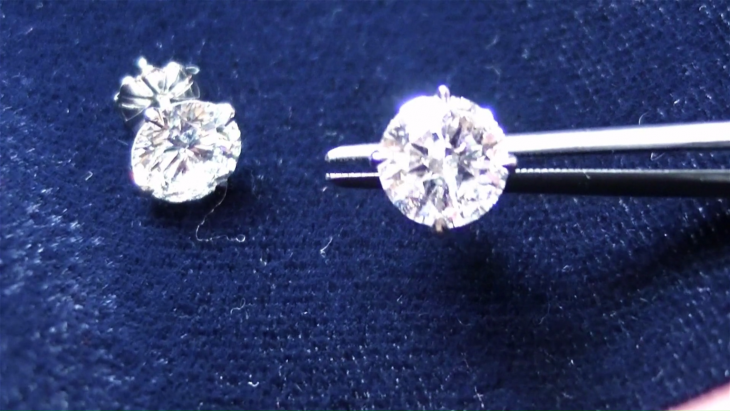
With the advent of improvement to the laser technology sector, its ability to selectively target, eradicate or at the very least, significantly reduce the visibility of black inclusions on a microscopic level has drastically improved in the past decade. Natural earth-mined diamonds that contain black looking inclusions have been successfully laser-drilled to improve their appearance since the late 1960s. This extraordinary technique was attributed to scientist Louis Perlman that did a effective test a year after General Electric created its laser drill in 1962.
With regards to its efforts in diamond improvement, the laser drilling process utilizes a surgical grade infrared laser operating at a wavelength of approximately 1064 nm. This is done to effectively bore very minute holes (approximately 0.005 in. in diameter; this is less than 100 microns) into a diamond crystal in order to begin creating an open path (called channels) well into the black inclusion. The laser will burn a narrow and hollow channel from the outside of the crystal directly up into the inclusion. Once the exact location of the target inclusion has been reached via the drilled channel, the crystal is soaked in a sulfuric acid solution. This vital next step works to dissolve whatever the black-like inclusion is composed of. After an extensive soaking in the sulfuric acid solution, the dark looking blemish will either dissolve and be flushed out; or it will become colorless or even a slightly whitish opaque tone where the former blemished area was apparent. By utilizing this targeted treatment more than one inclusions can be safely removed from that stone at one time. Under microscopic examination the micro-fine drill or bore holes can be observed. But fortunately, after this treatment; they are certainly not as distracting as the former dark inclusions, And the newly created holes do not negatively impact its sparkle or the striking brilliance of the stone. While the newly created channels are usually straight in its trajectory, from an entry point on the crystal surface; the surface-reaching holes can only be observed via reflecting light off of the surface of the stone during microscopic inspection with something like a jeweler’s 10X loupe or magnifying lens. That’s because they are virtually completely invisible to the unaided eye.
Unlike fracture-filled diamonds which are another process completely, involving
filling in a crack with a glass-like material, and can be removed later on; a
laser drilled hole in a diamond is considered by the leading diamond institute GIA
(Gemological Institute of America) to be an internal inclusion (and as such is considered
to be permanent). This critical grading result is marked on their diamond
grading certificates just the same as natural inclusions are indicated,
naturally occurring ones like clouds, feathers and crystals.
FAQs for Laser Drilled Diamonds
Q: because we know that laser drilling is a permanent condition and therefore GIA will certify these stones, are they considered to be somehow better or at least more valuable than fracture filled clarity enhanced diamonds?
A: Yes, it is considered to be a better condition in the one sense that the previously applied treatment is a permanent one. In truth, they are considered to be more valuable than fracture-filled clarity enhanced diamonds. And it’s good to know that they are significantly less expensive than their natural counterparts which haven’t had the laser drilled treatment.
To illustrate: Let’s say I have some round diamonds weighing 0.70ct that are D color with SI1 Clarity. One that is laser drilled will sell at approx. $2000. But the same diamond that has undergone clarity enhancement might cost closer to $1500. A completely untreated diamond will be about $4000. So, you can clearly see that the laser drilled diamond is less expensive than the un-treated stone. Notice that the clarity enhanced diamond sells for even less than the others
Q: How can a layman really detect laser drilling?
A: In some cases, laser drilling can be quite apparent when viewed under a loupe or even a microscope. In other instances, especially where the lasering was very slight, it can be extremely difficult to detect. It actually depends on just how deep the drilled hole was made into the stone as well as the actual location of its drilling. For many observers, can be nearly impossible to recognize when the diamond is observed face up, or as you would observe it when set in its mounting. The drilling is typically performed in a perpendicular plane to the facet on which the black inclusion is most visible.
If all other quality aspects, like color, cut, and carat weight are deemed excellent and the diamond is considered to be of an eye clean clarity grade, then don’t let that one fact that the diamond has undergone laser drilling treatment negatively impact your decision. Of course, you should expect a better price, and you will get that of course. That’s actually one of the attractive features of a laser drilled diamond. They look beautiful and appear just like stones of a much higher price all because of their laser treatment. Most buyers today consider that to be part of their smart shopping knowledge. But all things being equal, laser drilled diamonds are vigorously traded every day at all diamond exchanges around the world—and that’s because there is a robust market for these stunners. It is important to note however, that the diamond has been laser drilled and that carries a price advantage for the shopper. In the end, it shouldn’t affect your decision to choose that diamond. If you like how it looks go for it—that’s all that matters. You’ll be wearing it for years to come and you want to enjoy it every day. Just remember, you’ll be earning lots of compliments along the way. Because laser drilled diamonds often look brighter, higher in clarity and often in color too.
These diamonds are available at so many reputable enhanced diamond dealers now—both as loose diamonds and also those mounted in 14K to 18K gold of all colors, like; rose, white, yellow, or two-tone gold. You’ll find striking laser treated diamonds set as studs, pendants or certainly as solitaire rings where their attractiveness really shines. Make yourself familiar with wide array of laser drilled loose or mounted diamonds. You’ll probably decide to collect many of them because you can get much more for your money and you’ll find it’s easy to establish an entire wardrobe of top-notch laser frilled diamond jewelry of all kinds.
Here’s something of interest to those shopping for laser drilled diamonds. Obviously, you want to shop at a reputable dealer with years of experience so you will get the best selection of laser drilled diamonds. Next, the reputable dealer will also clearly disclose that your diamond has been treated with laser drilling. They will also put this in writing for you. That’s key. Additionally, it’s good to note that the WFDB (or World Federation of Diamond Bourses) requires its members of diamond bouses worldwide to disclose their treatment of laser drilling to both retailers, resellers like wholesale vendors and to the public. Top independent gemological labs will likewise indicate the detail that the diamond being examined was drilled in its documentation—called diamond reports, or grading certificates, depending on the lab issuing the document. By knowing with this mandate, you might ask the diamond vendor you are working with if they disclose all treatments that their diamonds have gone though. They should be very forthcoming and happy to write these details on your sales receipt.

Laser drilling and Diamond Boiling
Now that we have firmly discussed all aspects of laser drilling—in general as it applies to diamonds in particular, let’s turn our attention to the treatment of boiling diamonds. It is of course a completely different process, but as you will discover, it’s one that can be executed in tandem with previous laser drilling procedures. As with any treatment procedure in diamonds, it’s always done with the prospect of improving the appearance of the stone, improving its clarity grade, even its color in certain instances. So, its never done without a specific goal in view. Let’s see what boiling accomplishes.
Boiling is one of several proprietary laboratory method for cleaning diamonds. In this and other procedures, diamonds are destined to be checked at every stage of manufacturing process and step by step, sorted to determine what defects if any, remain. That’s when the discover process comes into play—and in which the candidate diamonds that are suitable for laboratory boiling will be set aside for the procedure.
At some point in the manufacturing process, its logical that dirt will adhere to the diamond crystal’s surface. You may be surprised to learn that diamonds, which are made of carbon attract oily substances. But it’s true. The very nature of the material acts like a magnet to any oily material. Keep that in mind when you hear jewelers advising you to clean your diamonds often. They still attract oil and dirt after being cut and set. This debris can be traces of adhesive, dust left from the polishing process, or any number of other unwanted materials. By the end of the manufacturing process, and before stones are to be sorted as polished goods, diamonds designated for the Diamond Boiling method undergo a type of boiling process. Basically, it involves a form of cooking the stones to remove all the residual foreign substances stuck to the stone after all it’s been through. There are two kinds of boiling that may occur; one is called regular boiling and then deep boiling, which is also known as deep cooking. Here’s the difference in each type.
Regular boiling
The process called regular boiling is intended simply to remove external grime only. This process can actually be conducted at various stages of the polishing process. And so, it may happen more than once to a diamond being polished to perfection. As the polisher determines it necessary to continue the process he may repeat farther down the cutting and polishing process. To keep both the stones safe, and the people doing the work protected, boiling is done is special rooms set up for this process.
Here’s an insider’s viewpoint of the diamond boiling events. Specially made test tubes are set up in customized ovens made exclusively for this process. Into these special ovens, the diamonds are securely placed. If the stones are quite large, they may be put in individually; if the stones are small in size, like melee used as accent diamonds in jewelry, they are placed in protective packets. Next, a formulated sulfuric acid is inserted into the test tubes along with a potassium chloride concoction. You may be surprised to learn that even though this is a highly exotic treatment, the boiled diamonds are not affected by either acid or by a boiling process and are therefore not harmed at all. Diamonds are one of the toughest natural materials on earth. They are known to be the hardest natural element that has been discovered ever. These durable diamonds are then “boiled” for approximately 15 minutes; until it is determined that the potassium chloride formula has dissolved in the mixture and its liquid turns yellow. That’s the end of the regular procedure.
So, the diamonds are now removed from the oven to be cooled and washed with a vast quantity of water. At that point it receives a bath with alcohol spirit and set aside to be dried well with lint-free cloth towels. The cleaned diamond is ready to be returned to its special case. By the end of this lengthy and detailed process, these boiled diamonds appear sparkling and bright; and pristinely clean from any residual external grime.
Deep boiling or deep cooking the diamond
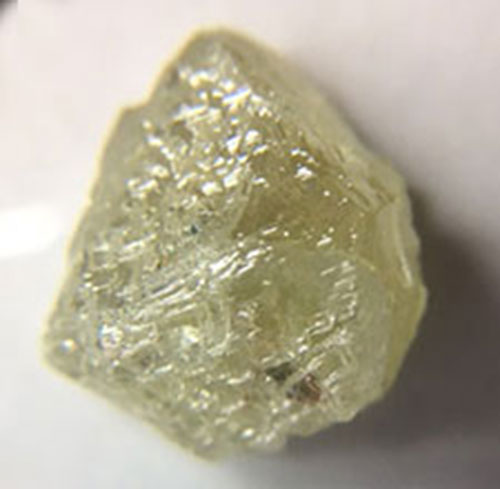
Deep boiling is a separate specialty procedure to clean diamonds. The purpose of this so-called deep boiling is to make a successful attempt to reach areas of internal dirt within the crystal. The way it accomplishes this more intense process is this; the boiling solution can penetrate inward into the crystal via the minute fissures referred to as an “open inclusion”. Tiny bits of black graphite which is recognized by diamantaires is trapped inside the diamond. These
As the phrase ‘deep boiling’ suggests, this process is certainly more involved. In fact, deep boiling is quite a long process which can last between 10 to 12 hours start to finish. This can be accomplished by using a blend of extremely stout acids; all set at a very high heat. Diamond crystals selected for this treatment are gathered into very durable containers made of tantalum and are then sealed in pressurized containers. After the boiling process is completed, the containers are left to become cooled. Any residual acid-steam is then released, and the deep boiled diamonds are left to undergo a further regular cleaning process. The deep boiling process is obviously more complex than ‘normal’ diamond boiling, and more dangerous than regular boiling as well.
Steam Cleaning Your Diamond Jewelry and Boiling Diamonds
While many of us love and do collect jewelry, not too many of us actually have a jewelry steam cleaner at home. We certainly are not used to have the more powerful professional varieties in our home. The cost and challenge with storing such a device makes them off limits for most consumers. Besides, while they can be more efficient for large scale cleaning tasks, they do create some thermal dangers. For one, by elevating the temperature of a diamond or gemstone quickly they then rapidly return the pieces to a more normal room temperature. Nevertheless, steam created from these devices is highly effective for melting greasy debris and oil and then blowing it away with other collected grime. Fortunately for most of us who enjoy wearing jewelry often, the basic cleaning job only requires a quick spurt of high-temp steam to get the job done.
Of the three chief industrial cleaning arrangements, boiling is the one most often utilized by non-professionals. (of course, trades people often use it, too). It’s basically uncomplicated and can be accomplished rather quickly. But still, it’s not without some element of risk. Basically, the boiling method is likened to using warm water, mild detergent, and a soft brush but at a much higher temperature of course. In this procedure, both jewelry and detergent are placed in a receptacle of clean water and bring it to a boil. After an extended period of time, remove the items and scrub them with a soft bristle brush; then rinse them well, and dry.
Steam Cleaning and Boiling Caveats
Always keep in mind that the treated diamond can be ruined if the water is allowed to boil off completely until it’s left sitting in a hot pot with no more liquid. Yes, in certain situations, diamonds can indeed burn.
The extremely high temperatures and rapid temperature changes that occur in both steam cleaning and diamond boiling my sometimes be considered as risky. This is because some natural gemstones have inclusions (or blemishes) that may actually be composed of some entirely dissimilar minerals. And the two separate materials will likely have different heating coefficients. A rapid fluctuation in the host (the main crystal with its inclusions) gem’s internal temperature could produce stress that causes a split somewhere in the stone. Liquid inclusions which can potentially expand under this extreme heated condition of course, can also create structural pressure when heated.
Helpful Boiling & Steam Cleaning Tips
If ever you contemplate subjecting any one of your gems to a high heat condition, you must correctly prepare the gem first. This can be achieved by re-warming the stone by immersing it first in warm, then increasingly warmer water until it has acclimated to the hotter environment. Each of the three main cleaning techniques have the potential to elevate a stone’s temperature too quickly if not done in stages to protect the crystal. Even when you successfully make it to a high temperature safely, you have to realize that coming back down to room temperature again poses a challenge as well. You’ll want to cool it down in the reverse way you acclimated it to extreme heat. This time you do it by placing the crystal in warm water and carefully replace with cooler water step by step. Be sure to avoid exposing a diamond you’ve just heated to cold air that can be an especially stressful situation for the crystal and you may risk unnecessary stress fractures.
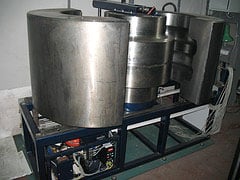
Bottom Line about Diamond Boiling
Even if you prefer leaving mechanical gemstone cleaning by way of boiling to the professionals, you are wise ask them questions first about their procedures and how it relates to your gemstones. If their replies don’t fully satisfy you, simply go elsewhere for the work to be completed. Smart jewelry owners acquire at least a little knowledge about gems, their care requirements, and also the different cleaning systems available, and all this will help you make the best possible choice.
Diamond Boiling in Review
The Deep Boiling Process:
This method is the only type of diamond clarity enhancement to be sanctioned by GIA (Gemological Institute of America). The process comprises boiling the diamond requiring treatment in a condition that is under deep pressure and in a special acidic solution.
Replacing the Inclusion
This procedure can only work effectively on diamonds whose inclusions are actually black (or black-ish) and also those that reach the surface. If the cavity where the inclusion is does not fully reach the outer surface of the finished cut crystal, then it becomes clear that the acid has no way of penetrating deep into the crystal reaching the inclusion.
So, likewise, in the case of deep boiling, this boiling procedure does not fill in the cavity, rather it simply removes the dark looking compound that’s filling the space. So, at very best, this delicate procedure can indeed remove a very obvious black inclusion and then replace it with a somewhat translucent white filling.
Low Cost & Common Boiling Practices
This method is so commonplace today and low cost that most large-scale diamond manufacturers will simply deep boil their entire production of diamonds before they attempt the sorting process just to be sure they have removed any black inclusions that could be removed quickly and easily. This cheap old standby method is universally utilized around the globe.
There is no stigma whatsoever attached to this treatment.
Tips for both Steam Cleaning and Boiling
If you intend to expose one of your gems to high heat, prepare the gem first is rule one. Pre-warm it by immersing it first in warm, then warmer water. If you accelerate it to a high temperature safely of course, realize that when coming back down again, there are equal challenges to confront. Cool it down in warm water nice and slow. And after, avoid exposing the stone you’ve just heated to frigid air.
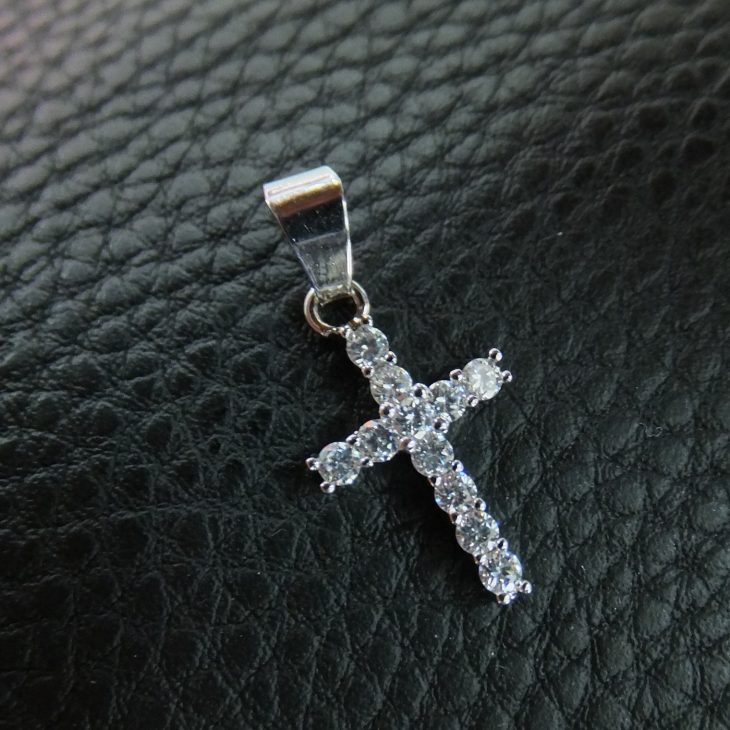
The Bottom Line of Laser drilling and Diamond Boiling Treatments
It may sound very complex to subject diamonds and gemstones to these rigorous treatments of laser drilling and diamond boiling—by whatever method you choose—either simple boiling or the complex version. Maybe you don’t want to get involved with any of these processes yourself because you don’t feel confident that you’ll protect your stone from damage. Even if you want to leave these forms of gemstone cleaning to the professionals, you’ll want to do your homework first before you leave your gem in someone else’s hands. Ask them all the relevant questions about how they conduct their procedures –as it relates to your gemstones. If their answers don’t give you confidence, just go elsewhere. There are many top-notch professionals in the diamond business who can give you the right kind of treatment all while safely protecting your property. A little knowledge of gems goes a long way. Care requirements, and different forms of cleaning systems are all out there and knowing what’s what will help you make the best possible decision that’s right for you.
Your precious diamonds and gemstones are meant to last a life time with proper care and handling. But like all precious objects, they require some thoughtful care and maintenance. That’s were boiling can come in to the picture. And you may have already decided on buying laser drilled diamonds. Good for you. You’ve thought it through—weighed your options and found that the pricing is attractive on laser drilled diamonds. That way, you are able to buy a larger more sparkly stone than you originally thought possible. And its all because you shopped around and considered both natural untreated diamonds and the modern alternative, the clarity enhanced diamond. Whether the clarity enhancement process came by laser drilling, or boiling, you’ve made your decision. Now get ready for the compliments. With clarity enhanced diamonds, whether you bought a laser drilled diamond or a deep boiled diamond, you have an earth mined genuine diamond that will be a part of your whole life. Treat it like you do your other fine jewelry and it will give you many years of enjoyment.

And consumers are more protected by rules and regulations now when it comes to their fine jewelry. So you know what you are getting when you go to a reputable dealer. They are proud of declaring that they sell clarity enhanced diamonds, and so they should be. Today, the FTC, (or Federal Trade Commission), that governs commerce now requires the disclosure of laser drilled diamonds being offered to retailers or consumers. Members of the diamond trade have always considered this disclosure to be a responsible a requirement for such revelation even before the FTC made it a requirement. Your clarity enhanced diamond having been laser drilled, fracture filled or boiled represents one of the smartest purchases modern diamond shoppers can make. It presents value beauty and a lifelong enjoyment.
